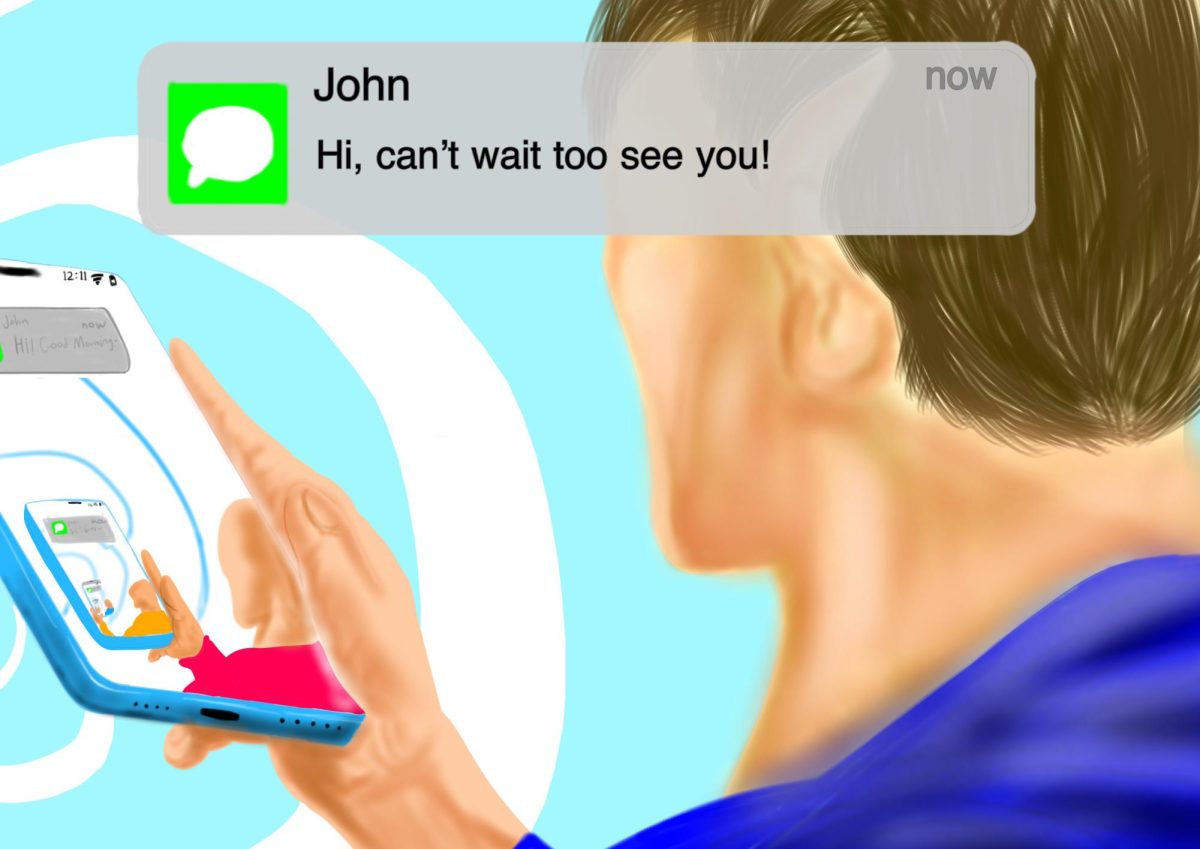Pro – by Gabrielle Gonzales
TPHS announced an updated Student Cell Phone Policy for the 2024-25 school year, preventing cellphone usage during instructional time in an effort to “support the academic performance and the social and emotional fitness” of students. The measures being implemented are a timely and beneficial response to alarming mental health trends among youth, which have coincided with the rise of cellphones and social media.
According to the updated policy, the school aims to help students “develop into happy, healthy, productive, and resilient adults,” and to eliminate a distraction that “erode[s] human connection, increase[s] depression, and enable[s] addictions.”
Not only aimed at increasing productivity and focus on campus, the policy serves as a protective measure against the youth mental health crisis; recent data correlates this crisis with excessive cellphone usage. The National Survey on Drug Use and Health found that internalizing disorders like anxiety and depression affect Gen Z more than any other generation, affecting interest and performance in school. Behavioral data, which shows increased self-harm and suicide, provide mental health experts with answers. Hospitalizations show the severity of symptoms, and the CDC found that in 2020, 113 out of 100,000 girls were hospitalized for non-fatal self-harm. The situation for boys is evident when examining suicide data; In 2022 the CDC found the figure for 15-19 year-old American males is 10 times greater than that of females.

What changed? In the last decade, why has teen mental health drastically decreased, and how does this correlate to the updated cell phone policy?
In 2019, Killian Mullan, lecturer and researcher in sociology and policy at Aston University in Birmingham, found that in the U.K., this change began in the 1970s with the decline in play-based childhood and increased parenting during the 1990s, as noted by the University of California, San Diego. This was quantified by increased time and money spent on childcare services and increased hours parents spent with their children, regardless of education level or economic standing.
According to the American Time Use Survey, the daily time 15- to 24-year-olds spend with friends has seen the most dramatic decrease, a difference of 101.7% between 2010 and 2020. Additionally, since the 2000s, Monitoring the Future, a continuing study of American youth, found that the number of high school seniors who had never tried semi-adult activities like drinking alcohol, getting a driver’s license, having sex, or getting a job hit a steep decline.
This noticeable shift in teen mental health and behavior coincides directly with the rise of a phone-based upbringing. Activities that once interested teens are increasingly obsolete as the cellphone becomes increasingly prevalent. The cellphone was a crucial aspect in ushering the digital age that newer generations have grown up with.
According to San Diego State University psychologist Jean Twenge, the percentage of American youth who use social media daily has increased around 4.5% annually, having a devastating impact on adolescent populations. Beyond mental health, there is also a concerning decline in sleep, academic performance and exercise, causing worry among teachers, administrators and parents.
The updated Student Cell Phone Policy responds to the mental health crisis and aims to eliminate a primary factor in the decreasing well-being of today’s youth.
While this policy has students’ best interest at heart, it does not give students the opportunity to self-regulate cell phone usage. Teens are aware of mental health risks posed by excessive cell phone use, but this policy fails to entrust students with the responsibility of appropriately using and managing the online realm. While students are stripped of this ability, greater progress will be made if cell phone usage is in the hands of administrators. If students can properly regulate usage, why is there an epidemic? Why does data show the continued downfall of teens?
BJ Casey of Columbia University and Kristina Caudle of the National Center for PTSD found that adolescents put themselves in harm’s way because of diminished self-control. While not always the case, the adolescent brain can not be entrusted with making difficult decisions to protect itself.
Schools and administrators have the power to reduce this disturbing addiction and the school sets an example of how to proceed. The updated Student Cell Phone Policy will protect the mental, social and physical well-being of students and help them navigate an essential tool in today’s world, the same tool that continuously preys on the downfall of America’s youth.
Con – by Joy Ma
For the 2024-25 school year, TPHS will enforce a new Student Cell Phone Policy that prohibits students from using personal phones in class with the goal of enhancing students’ “social and emotional fitness” and addressing the issue of “eroding human connection.” Although this new policy’s intentions are admirable, it is overly restrictive and ignores the crucial role that technology plays in modern life. The policy risks leaving students unprepared for the future, rather than equipping them for a technology-integrated world.
One of the most significant problems with the policy is its disregard for student autonomy, responsibility and accountability. Adolescent years are critical for the development of self-control and independence. By imposing a blanket ban on cellphones, the school is depriving students of the chance to learn how to control distractions and use technology sensibly.
According to a study published in the American Psychological Association, students who are given the opportunity to self-regulate their phone use show improved self-control and decision-making skills over time.

Instead of teaching students the methods of how to successfully and effectively navigate the digital world, the policy assumes they cannot be trusted, which is counterproductive to their growth and development. Ergo, schools should focus on guiding students to make mindful decisions about when and how to use their devices, preparing them for a future where technology is ubiquitous.
Further, being technologically proficient is crucial in the swiftly advancing modern digital world. Digital devices and online communication are essential in today’s higher education facilities and work settings.
According to The World Economic Forum’s Future of Jobs Report 2023, one of the most important skills for jobs in the future is technological and digital literacy — the ability to use information and communication technologies to access, manage, understand, integrate, communicate, evaluate and create information safely and appropriately through digital technologies, according to UNESCO. Banning or heavily restricting cellphones hinders students’ preparation for the realities of living in a cutting-edge world. Students should experience combining their use of technology with other obligations so they can build the skills necessary for success.
Although proponents of the policy contend that students’ cellphones are a major distraction in the classroom and that completely taking them away is the solution, this is not the best course of action. Rather, a comprehensive approach that incorporates technology into the classroom can both minimize distractions and improve student learning. Setting designated periods for phone use, incorporating educational apps during lessons and emphasizing digital literacy are all ways to instruct students on how to use their devices appropriately.
By acknowledging the value of incorporating technology into the classroom, the school can better equip its students for their future. The school should put more effort into utilizing technology to improve instruction, encourage responsibility and provide students with the tools they need to succeed in a digitally-connected world, rather than enforcing tight restrictions and denying students their right to take control of their education and make decisions for themselves.











